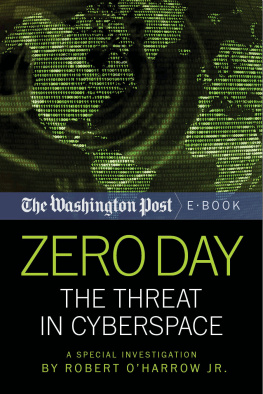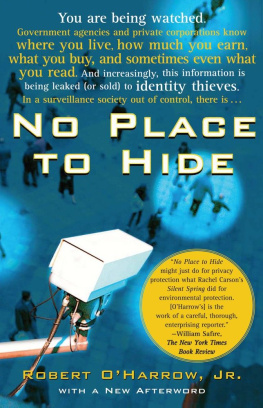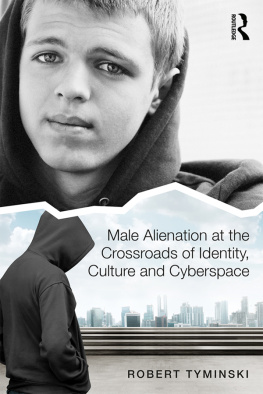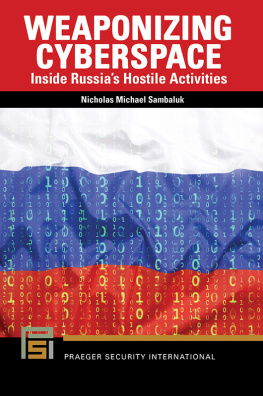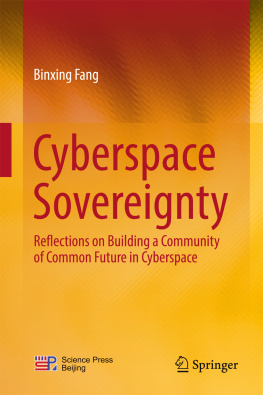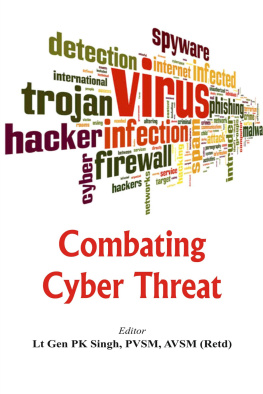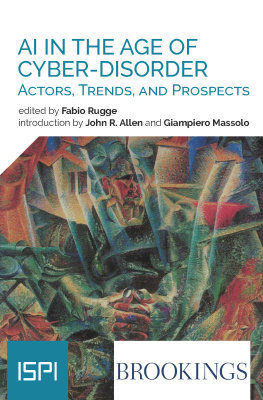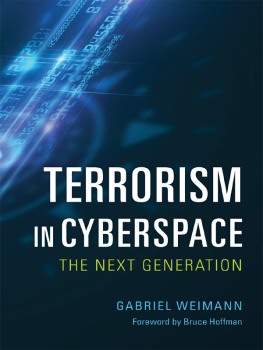Robert OHarrow - Zero Day: The Threat In Cyberspace
Here you can read online Robert OHarrow - Zero Day: The Threat In Cyberspace full text of the book (entire story) in english for free. Download pdf and epub, get meaning, cover and reviews about this ebook. year: 2013, publisher: Diversion Books, genre: Politics. Description of the work, (preface) as well as reviews are available. Best literature library LitArk.com created for fans of good reading and offers a wide selection of genres:
Romance novel
Science fiction
Adventure
Detective
Science
History
Home and family
Prose
Art
Politics
Computer
Non-fiction
Religion
Business
Children
Humor
Choose a favorite category and find really read worthwhile books. Enjoy immersion in the world of imagination, feel the emotions of the characters or learn something new for yourself, make an fascinating discovery.
- Book:Zero Day: The Threat In Cyberspace
- Author:
- Publisher:Diversion Books
- Genre:
- Year:2013
- Rating:4 / 5
- Favourites:Add to favourites
- Your mark:
- 80
- 1
- 2
- 3
- 4
- 5
Zero Day: The Threat In Cyberspace: summary, description and annotation
We offer to read an annotation, description, summary or preface (depends on what the author of the book "Zero Day: The Threat In Cyberspace" wrote himself). If you haven't found the necessary information about the book — write in the comments, we will try to find it.
Zero Day: The Threat In Cyberspace — read online for free the complete book (whole text) full work
Below is the text of the book, divided by pages. System saving the place of the last page read, allows you to conveniently read the book "Zero Day: The Threat In Cyberspace" online for free, without having to search again every time where you left off. Put a bookmark, and you can go to the page where you finished reading at any time.
Font size:
Interval:
Bookmark:
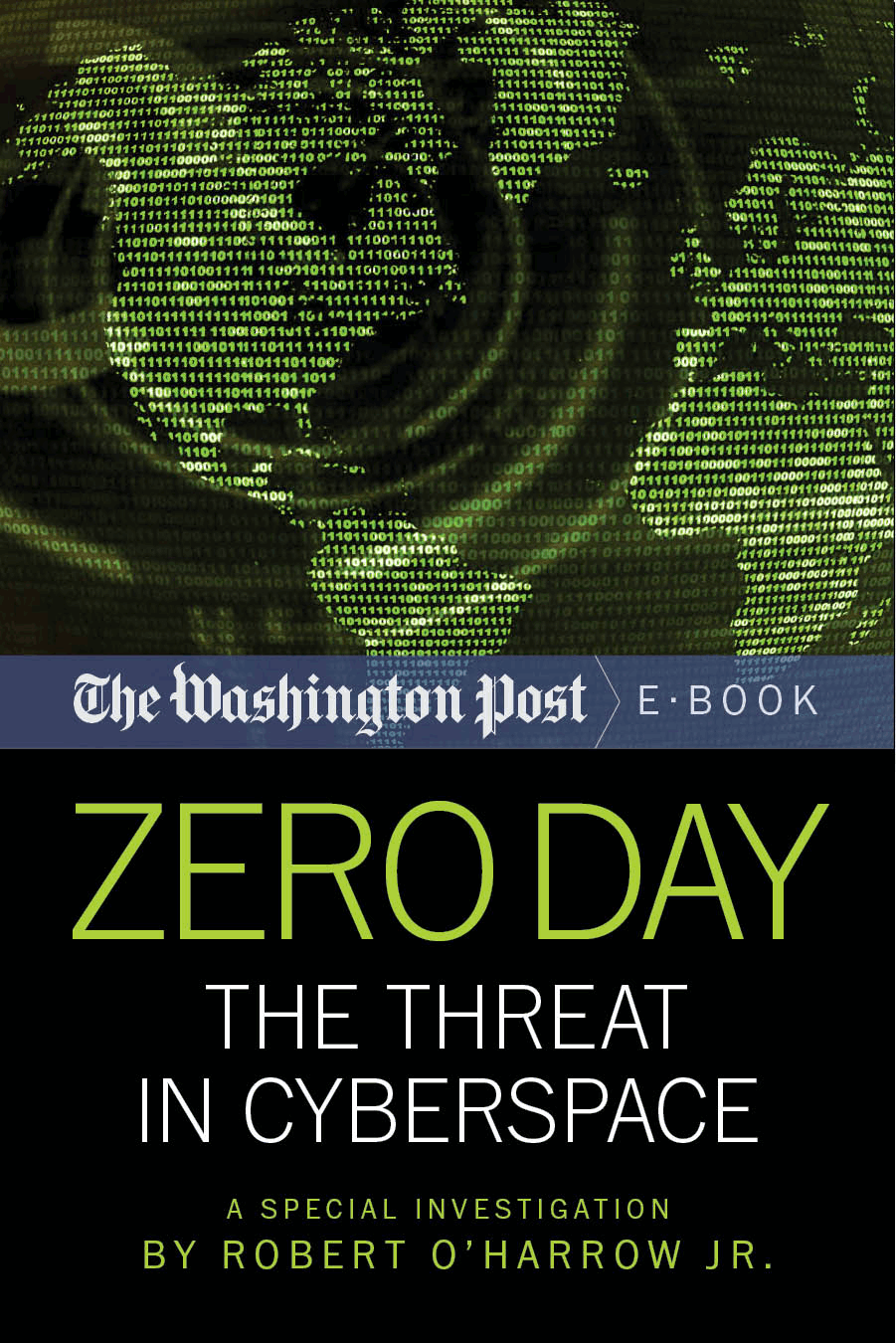

Diversion Books
A Division of Diversion Publishing Corp.
443 Park Avenue South, Suite 1004
New York, New York 10016
www.DiversionBooks.com
Copyright 2013 by The Washington Post
Cover map art by Sohail Al-Jamea/The Washington Post
Edited by Jeff Leen, Washington Post Investigations Editor
All rights reserved, including the right to reproduce this book or portions thereof in any form whatsoever.
For more information, email info@diversionbooks.com.
First Diversion Books edition January 2013.
ISBN: 978-1-938120-76-3
The digital universe came to life on Oct. 29, 1969, when researchers at UCLA sent a single message to the Stanford Research Institute. It wasnt much of a message, just one word: login. In fact, only the first two letters made it through before the system crashed. But a communications revolution had begun.
In the coming years, as networks spread and computer power exploded, hundreds of million of people found their way online. And then an idea that first emerged in science fiction became a vital reality: Cyberspace.
Cyberspace is now the most complex man-made environment on earth. It expands every moment, warping notions of time and space and diminishing the distinction between machines and people. The electronic impulses that carry the data online move at lightning speed. A roundtrip from Washington, D.C., to Beijing online occurs in less time than it takes a major league fastball to cross home plate.
An uncounted variety of devices have been linked in to cyberspace, offering almost magical features and services. Smart phones, industrial control computers, railroads, satellites, jet fighters, new cars, laptops, data routers, medical equipment, elevators, video cameras, ATMs, toll booths and GPS systems. The list grows by the hour. A researcher at Cisco estimates that more than 12 billion devices have connected so far, a number that will more than quadruple over the next decade.
Dr. David Clark, a senior research scientist at MIT, helped developed the architecture of the Internet in the 1970s. He and his colleagues had no idea what was coming.
People say to me, Did you imagine hooking every computer in the world together, Clark said. And I said, Oh yes, we thought there might be 10,000 of them.
Because security was not a priority, hacking has always been a problem. But something changed in 2012. The world became aware. It seemed as though everyone the president, lawmakers, corporate executives and regular people began acknowledging that the threats to all the systems in cyberspace were unprecedented, unrelenting and possibly existential.
Attacks on computers and networks now occur every hour of every day. Espionage of military communications. Theft of money and intellectual property. Disruption of water service and nuclear processing facilities. Invasions of privacy. And yet, because it is often impossible to know who is behind a hack, or where it originates, or even when it has occurred, the best that defenders can do is react quickly and well. Resilience became a mantra in 2012. Deterrence remained only a hope.
The most destructive scenarios involve cyber actors launching several attacks on our critical infrastructure at one time, in combination with a physical attack on our country, Defense Secretary Leon Panetta said in October 2012
Attackers could also seek to disable or degrade critical military systems and communication networks. The collective result of these kinds of attacks could be a cyber Pearl Harbor.
A panel of the nations top scientists told the Pentagon not long ago that the cyber-universe is complex well beyond anyones understanding and exhibits behavior that no one predicted, and sometimes cant even be explained well.
The Washington Post decided to try. For more than a year, reporter Robert OHarrow devoted himself to exploring and explaining the nature of cyberspace and the threats proliferating there. His stories spelled out the technical underpinnings of network vulnerabilities, the hacks used to exploit those systems and the consequences.
This e-book, Zero Day: The Threat in Cyberspace, is a compilation of that reporting. With narratives built around hackers, security researchers and corporate executives, OHarrow illuminated the mind-bending challenges online. He had a simple goal: to help regular people, lawmakers and others to better understand one critical aspect of a fast-changing world.
All of cyberspace is driven at the most fundamental level by computer code, 1s and 0s in trillions of combinations, the simplest of man-made creations. Computer code has created unimagined benefits. But because of the worlds accelerating dependence on code, it also has brought pervasive vulnerabilities.
At last count, there were more than 53,000 different vulnerabilities in software systems that can be exploited to take control. Many of them have never been patched. But there are also uncounted number of unidentified vulnerabilities known as zero days flaws in software that could enable intruders to infiltrate computer systems, take them over and steal information.
And since no one knows except the attacker about [zero days], its really hard to defend against them. So you cant just look for the attack because youve never seen one before, said Charlie Miller, a former hacker for the National Security Agency and a leading security researcher.
And so you figure software has millions and millions of lines of code and there could be lots of these flaws lurking in there deep somewhere and you cant find them all, he said. So theres always going to be flaws in software and its always a race to see, can the good guys or the vendors find these flaws first or can the bad guys?
So much of the worlds activity takes place in cyberspace now including commerce, banking and communications the Pentagon has declared cyberspace a new domain of war. Battles in cyberspace are increasingly considered an inevitability. The cyberwarriors are already preparing to both defend and attack.
Its going to happen, said former National Defense University Professor Dan Kuehl. And when that day comes, and in our opinion it will, if were not prepared for it, the problems and repercussions will be magnified.
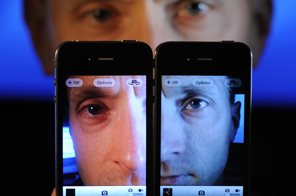
Sunday June 3, 2012
Charlie Miller prepared his cyberattack in a bedroom office at his Midwestern suburban home.
Brilliant and boyish-looking, Miller has a PhD in math from the University of Notre Dame and spent five years at the National Security Agency, where he secretly hacked into foreign computer systems for the U.S. government. Now, he was turning his attention to the Apple iPhone.
At just 5 ounces and 4 1/2 inches long, the iPhone is an elegant computing powerhouse. Its microscopic transistors and millions of lines of code enable owners to talk, send e-mail, take photos, listen to music, play games and conduct business, almost simultaneously. Nearly 200 million iPhones have been sold around the world.
Font size:
Interval:
Bookmark:
Similar books «Zero Day: The Threat In Cyberspace»
Look at similar books to Zero Day: The Threat In Cyberspace. We have selected literature similar in name and meaning in the hope of providing readers with more options to find new, interesting, not yet read works.
Discussion, reviews of the book Zero Day: The Threat In Cyberspace and just readers' own opinions. Leave your comments, write what you think about the work, its meaning or the main characters. Specify what exactly you liked and what you didn't like, and why you think so.

